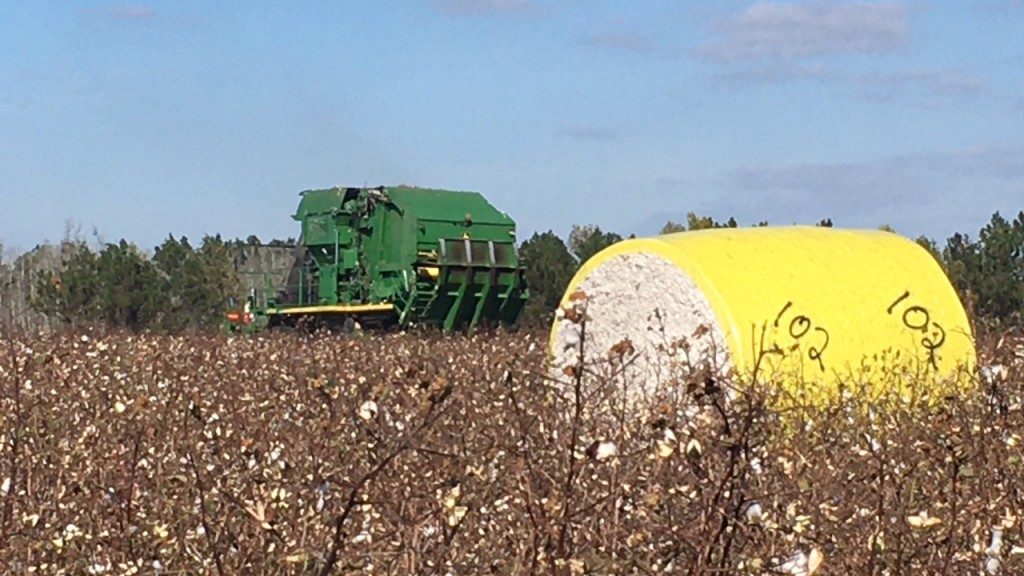Small Grains
-
It’s that time of year again when you need to make a decision about which grain varieties to plant. Choosing the right variety for the region, field, and management practices is one of the most important decisions a grower will make in terms of profitable production. With so many differences between varieties, it is critical…
-
If you are interested in the 2021 Wheat OVT data it is available at the link below. 2021 Preliminary Wheat Info at this link https://swvt.uga.edu/content/dam/caes-subsite/statewide-variety-testing/docs/performance-trials/2021/Winter-20-21-Preliminary-Results.pdf UGA Wheat Production Guide from last year has lots of useful info and is at this link https://grains.caes.uga.edu/content/dam/caes-subsite/grains/docs/wheat/2020-2021-Wheat-Production-Guide.pdf If you have any questions please contact your local county Extension Agent.
-
Rome Ethridge, Interim UGA Grains and Soybean Agronomist Anthracnose disease is jumping in our later planted Grain Sorghum this week. It’s a disease that is often not too bad but can move quickly and cause yield loss. Some folks reporting that it wasn’t visible at all a week ago but is now in many fields.…
Posted in: Small Grains -
Do I need to spray fungicides on my peanuts again? According to Dr. Bob, there are three different scenarios for peanut fungicide applications at the end of the fourth quarter. 3 weeks until harvest and “clean”? I wouldn’t spray. 3 weeks until harvest and spots from top to bottom and leaves dropping? I wouldn’t spray.…
-
Amanda Smith, UGA Ag Economist, has updated the row crop comparison tool on the Extension Ag Economics Budgets web page. The May update includes increased commodity prices, updated crop insurance prices and higher fuel and fertilizer prices. Row Crop Comparison Tool May 2021 Strip Till Row Crop Comparison Tool May 2021 Conventional Till If you…
-
Below are various questions I received this week. They include forage moisture, weed control in corn and cotton, and Aspergillus crown rot. Also during the last couple of weeks we planted a few on farm corn demonstrations. What should my forage moisture be for baled silage? Considering all factors, the optimum whole-plant moisture for baled…
-
Fusarium Head Blight (FHB) has been a topic of discussion with growers, consultants and retailers over the last week. Growers need to monitor the stage of development of their wheat crop over the next few weeks in order to make fungicide application decisions. The stage of development of the area wheat crop ranges (March 26)…
Posted in: Small Grains -
I have been getting questions about aphid thresholds in oats and other small grains. Growers or scouts should inspect fields 25-35 days after planting, full tiller, and heading. Yield-reducing transmission of Barley Yellow Dwarf virus can occur during the first two periods; transmission at heading is too late to reduce yield. According to the 2020…
Posted in: Small Grains -
I have received a question or two about Tan Spot (formerly Helminthosporium) in local wheat. Tan spot has been noticed in a few area wheat fields and these fields range from boot to early heading stage of development (Week of April 4, 2020). The pictures below are examples of Tan Spot that I have been…
Posted in: Small Grains -
Below is a Georgia Quick guide that contains good production information on grain sorghum production. Georgia Grain Sorghum Production Quick Guide Below is a list of Sugar Cane Aphid Tolerant Varieties. List of Sugar Cane Aphid Tolerant Varieties
Posted in: Small Grains
